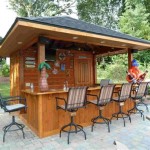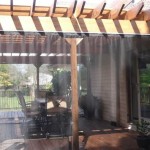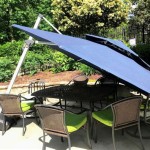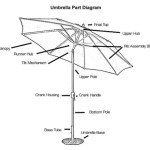The Benefits of a Natural Gas Patio Heater vs. Propane Tankless
Outdoor heating solutions extend the usability of patios and other outdoor spaces, allowing enjoyment even in cooler temperatures. Two popular choices are natural gas and propane tankless patio heaters. While both serve the same basic function, key differences exist regarding convenience, cost, and environmental impact, making one option more suitable than the other depending on individual needs and circumstances.
Fuel Source and Availability
A primary distinction lies in the fuel source. Natural gas heaters connect directly to a home's natural gas line, providing a continuous fuel supply. This eliminates the need for refilling tanks, a significant advantage for frequent heater use. Propane tankless heaters, conversely, rely on portable propane tanks that require regular refills. This can be inconvenient, particularly during peak usage seasons when propane availability may be limited.
Cost Comparison: Initial Investment and Long-Term Expenses
The initial investment for a natural gas heater is typically higher due to the cost of installation, which involves connecting to the existing gas line. Propane heaters have a lower upfront cost, but the recurring expense of propane refills can add up over time. Natural gas prices are generally lower than propane, leading to long-term operational cost savings. However, the precise cost difference depends on local utility rates and propane prices.
Environmental Considerations
Natural gas is considered a cleaner-burning fuel compared to propane, producing fewer greenhouse gas emissions. This makes natural gas heaters a more environmentally friendly option. While propane burns relatively cleanly, it still produces more carbon dioxide than natural gas. For environmentally conscious consumers, the lower emissions of natural gas are a significant advantage.
Convenience and Ease of Use
Natural gas heaters offer unparalleled convenience. With a constant fuel supply, users simply turn the heater on and off as needed, without worrying about fuel levels or tank refills. Propane heaters require monitoring propane levels and exchanging or refilling tanks, which can be cumbersome, especially for larger tanks. The "tankless" aspect of propane heaters in this context refers to the heater's design, not the fuel supply, which still comes from a tank.
Safety Features and Considerations
Both natural gas and propane heaters incorporate various safety features, such as automatic shut-off valves and tip-over protection. However, natural gas lines are subject to rigorous safety regulations and inspections, providing an added layer of security. Propane tanks, while generally safe, pose a potential fire hazard if not handled and stored correctly. Proper ventilation is crucial for both types of heaters to prevent the buildup of carbon monoxide.
Installation Process and Requirements
Installing a natural gas heater requires professional assistance to connect to the gas line, ensuring compliance with local building codes and safety regulations. This can add time and expense to the initial setup. Propane heaters are simpler to install, typically requiring only connection to the propane tank. However, local regulations regarding propane tank placement and storage must be adhered to.
Maintenance and Longevity
Both natural gas and propane heaters require regular maintenance, such as cleaning burners and checking for leaks. With proper care, both types of heaters can provide years of reliable service. Natural gas heaters, due to their fixed connection, may offer slightly greater longevity as they are less susceptible to damage from handling and transportation compared to portable propane heaters and tanks.
Performance and Heat Output
Both natural gas and propane heaters offer comparable heat output, measured in British Thermal Units (BTUs). The desired BTU output depends on the size of the area to be heated and the local climate. When choosing a heater, consider the manufacturer's specifications to ensure adequate heating capacity for the intended space.
Aesthetic Considerations and Design Options
Both natural gas and propane patio heaters are available in a variety of styles and designs to complement different outdoor aesthetics. From sleek and modern to more traditional looks, consumers can choose a heater that seamlessly integrates with their existing patio furniture and décor. Size and portability also vary, offering flexibility in placement and usage.

Patio Heating Options Cost Comparison Ultimate Home Comfort

Propane Vs Electricity Miami Ft Lauderdale Pico
Is Installing A Tankless Water Heater Outside Good Idea Quora

Propane Patio Heater Habitat For Humanity Greater Vancouver

Propane Patio Heater Habitat For Humanity Greater Vancouver

China Customized Most Efficient Outdoor Heater Suppliers Manufacturers Factory Direct Whole Anto Electric

China Customized Most Efficient Outdoor Heater Suppliers Manufacturers Factory Direct Whole Anto Electric

Proline Xe Ultra Low Nox Outdoor 140 000 Btu Non Condensing Natural Gas Liquid Propane Tankless Water Heater A O Smith

Camplux Enjoy Outdoor Life Tankless Water Heater 4 22 Gpm On Demand Propane Instant Hot Indoor Gray Ca422 The Home Depot

Legacy Heating 47 000 Btu Hammered Mocha Propane Outdoor Flame Patio Heater Caph 7smocha The Home Depot
Related Posts








